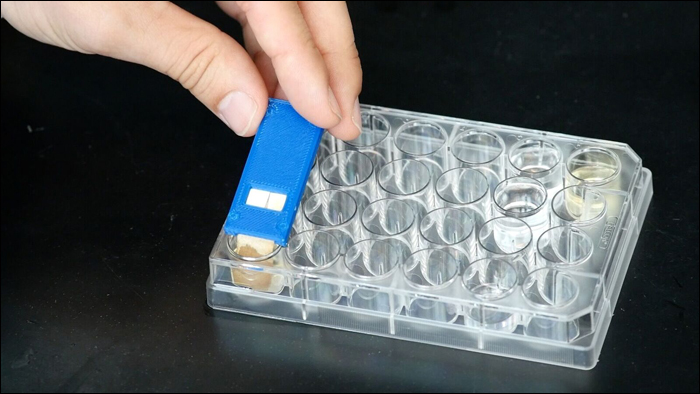Low-cost, yeast-based assay reliably detects fungal pathogens
Click Here to Manage Email Alerts
Researchers at Columbia University have developed a tool that uses baker’s yeast to detect fungal pathogens responsible for human disease, agricultural damage, food spoilage and population decline among animal wildlife worldwide.
Virginia W. Cornish, PhD, Helena Rubinstein Professor from the department of chemistry at Columbia University, and colleagues designed the test as a low-cost dipstick assay, similar to an at-home pregnancy test, capable of identifying the pathogens in whole blood, serum, water, urine and soil. The sensitivity and specificity levels of the test are comparable to those of more expensive whole cell antibody and nucleic acid assays, according to data published today in Science Advances.
“Our biosensor allows us to detect a pathogen for less than 1 cent per test; it is easy to use, cheap to produce and doesn’t require cold-storage facilities,” Cornish said in a press release. “It stands to impact agriculture and health, especially in developing countries, where it is arguably needed the most. We’re excited about the possibilities.”
According to the release, Cornish and colleagues initially set out to develop a simple and cost-effective way to detect cholera. However, they discovered that Saccharomyces cerevisiae, or common household baker’s yeast, could be used to address other needs.
“We realized that the same household baker’s yeast people use every day to brew beer and make bread could be programmed to detect a myriad of targets,” Cornish said. “We can now alter the DNA of the baker’s yeast to give it new functions that make it useful for a variety of applications. The prospect of using this technology in rural communities with little access to high-tech diagnostics is particularly compelling.”
Cornish and colleagues first developed a biosensor for the detection of Candida albicans, a human fungal pathogen that is a leading cause of life-threatening infections among immunocompromised patients, according to the researchers. They replaced a natural receptor of S. cerevisiae with that of C. albicans, then altered its DNA to facilitate lycopene production. The lycopene, a red pigment naturally produced in tomatoes, was used as a readout. It allowed the yeast to turn red when in the presence of C. albicans fungus pheromones, according to the release.

After reliably detecting C. albicans, the researchers successfully tested 10 other major pathogens, including Paracoccidioides brasiliensis, a disease-causing pathogen that affects mucosa in the nose, sinuses and skin, and Botrytis cinerea, a gray mold responsible for significant crop loss worldwide, the release said. The functionality of the assay was sustained after being stored at room temperature for 38 weeks.
“New research in the area of synthetic biology has given us the ability to leverage live cells in the development of much more specific and helpful tools than we have had in the past,” Cornish said. “Our assay can be cheaply made, economically produced at large scale, widely distributed as a stable dried product for household use, robustly applied to complex samples, is not reliant on cold-chain storage, and can be readily detected by the eye without additional equipment, making it a compelling and completely feasible tool for surveillance of pathogens around the globe. This is critical for human health, food security, bioterrorism, and maintenance of biodiversity.”
The researchers are currently in discussions with global health nonprofit organizations and international research, technology, development and citizen groups to determine how this technology can be used in specific countries. Although the biosensors are in the early stages of implementation, the researchers stated that they can be “immediately adopted” in clinical settings to reduce the time needed to identify fungal pathogens in blood cultures. They added that the range of biosensor targets can be expanded to include other fungal pathogens, as well as bacteria, viruses, toxins and other diseases.
“The possibilities, as we see it right now, are limitless,” Cornish said in the release. “We’ve just opened the door to this exciting new technology. It’s the beginning of a journey rich with potential.” – by Stephanie Viguers
Disclosure: Cornish is one of four study authors on a pending patent related to this study. All other authors report no relevant financial disclosures.
